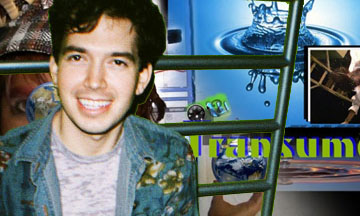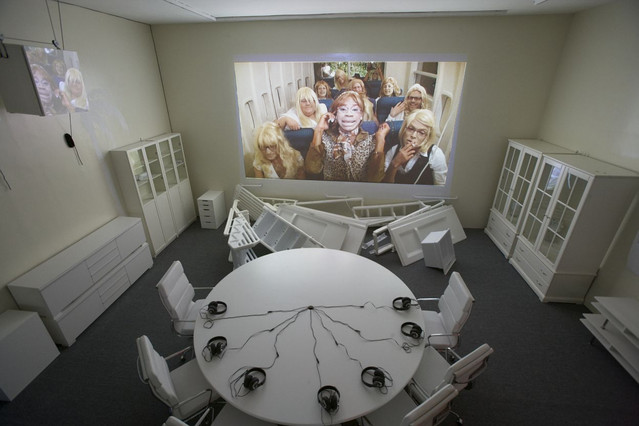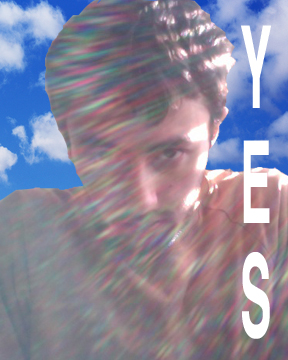Ryan Trecartin
- Ryan Trecartin
- Ryan Trecartin Artworks
-
Contributor Kiernan Gatewood

Ryan Trecartin is a Los Angeles based contemporary artist and has been widely recognized as one of the most influential artists of our time. Using a performative take on video art, Trecartin has redefined Identity within his films creating characters and settings that extend beyond "normalcy" and into a realm that has transcended gender, social status, sexual orientation and ethnicity. Born in Texas and raised in Ohio, Trecartin pursued a degree at the Rhode Island School of Design and graduated in 2000. From there he has lived in New Orleans, Miami and other places, settling in Los Angeles and working in New York as well.
Trecartin has had numerous collaborative and solo shows including exhibitions at MoMA PS1, the Hammer Museum, MOCA Pacific Design Center and the New Museum†. His videos tend to be extensive in length using scripts written in prose that is analogous to Shakespeare. Word play, visual notations and use of vernacular are extremely common and are both intuitive and contemplative. The Art itself is derived from more of its overall conceptual elements by way of its loosely constructed plot lines and themes. Drawing his artistic inspiration from "d-i-y" web-based social platforms, media and Internet art, he has been a defining player in furthering this aesthetic.
†New York Times “Like Living, Only More So” Roberta Smith 2011.
Clip from I-BE AREA (2007)
"I-Be2 becomes Oliver becomes Amerisha"
A first look of a Trecartin video (and more specifically, this piece called I-BE AREA) seems like an insane culmination of gibberish that has been thrown together. The eclectic use of Internet .gif files, 3-D animated icons and visual effects overlaid on what seems to be a series of completely disjointed monologues. In fact, upon looking closer (and probably after re-watching a few times) we see that the work is actually very organized and well thought-out. The major themes within the video and characters are a look on technology in a proto-futuristic world, where science and technology has developed to the point where people are dealing with them on an emotional and psychic basis extending beyond our current reality into a metaphysical realm; not too unsimilar to where we as a species are headed now.
The monologues and conversations as a script, are phenomenally complex, and have an intense poetic flow to them, not like anything else. Described by the NY Times during his solo show at PS1, they liken the dialogue to Shakespeare1. The work itself extends beyond the Post-Modernist ideals of multiculturalism and queer radicalism, and instead refocuses itself on identity that has extended beyond gender, race, sexual orientation and anything else decisive, allowing the characters to inhabit any body at any point and are free to make up their choice of individuality and self-projection. The use of hand-held camera work and short takes gives the feeling of emotional progressiveness, and a level of anxiety. Watching a Trecartin film can be a marathon, they tend to extend beyond an hour, and the style of the film never ceases. Extremely thought-provoking and entertaining, this is definitely one of the most important artists that is producing work today.
Clip from P.opular S.ky (2008)
Maintaining his unique style, Ryan Trecartin continues his exploration of characters and self-representation to this next film P.opular S.ky. Centering more on the idea of globalism and post-nationalism Trecartin’s characters are let loose into various settings and environments to expand their consciousness through their intricate monologues and interactions. Themes of setting and dialogue vary though topics of a movement beyond global capitalism and post-colonialism in what seems to be an effort to move past these lines and social ailments to collectively join together; themes that seems to run through much of Trecartin’s work. Plotlines are deconstructed to the point where they become non-linear at best and explore the various continuity disruptions when placed in context with one another through montage. Sets and props are literally destroyed during the scenes creating an uneasy tension and abrasiveness during the entirety of the piece.
PS1 installation (2011) “Any Ever”

Despite the fact that Ryan Trecartin's art mainly takes form within the video medium, he also widely uses sculptural and interactive installation projects when displaying his work in a gallery/museum setting. Taking the form of stations where the viewer can listen in on the video projected, the overall environment is generally focused on the video itself. However, it is interesting to analyze the surroundings that the viewer encounters when watching the projections. This above example is from his MoMA PS1 show in New York, “Any Ever” in 2011. Here his piece P.opular S.ky is projected in the background. The mid-ground that stands between the viewers is white office and industrial furniture that has been disassembled or strewn about the room. The viewer in the foreground is then seated at a conference table and received headphones by which to listen to the piece.
The use of office/industrial furniture is to take the most boring and mundane objects that exist in our every-day lives and amplify it to the point that it becomes chaotic. Since the prefabricated office space is the epitome of Modernist efficiency, Trecartin redefines and uses it as the physical space for a completely Post-Modernist experience.

Kiernan Gatewood is a junior at the University of California, Los Angeles majoring in Art History and Film and Television. As a recent transplant to Los Angeles from the S.F. Bay Area, he currently lives in Hollywood where he spends his rarely-free time exploring the many cultural aspects of the city. He studies Art History and Film Media with a major interest in Contemporary themes and mediums in art; Video, Performance and Installations are where his interests are set (for now). He also works at the UCLA Hammer Museum as an assistant for the Audio/Visual department, which allows him a lot of access to important viewings and lectures given by various artists from around the world. Kiernan is also a visual artist/designer/curator as well; having curated for the Artist’s Television Access gallery in the Mission District in San Francisco.
When producing work, he mainly uses Video and performance, however would like to have more outlets and time to materialize these ideas. Kiernan hopes to use his degree to further a career in the art world, somewhere, and hopefully contribute back as a curator or possibly as an owner of a gallery/store. Kiernan has a partner of two years who is currently finishing his degree at UC Berkeley, of whom he is immensely proud. He took this course of Queer Arts in Los Angeles in hopes of finding new artists and outlets that are in the Los Angeles area, and more specifically, based within the queer community


